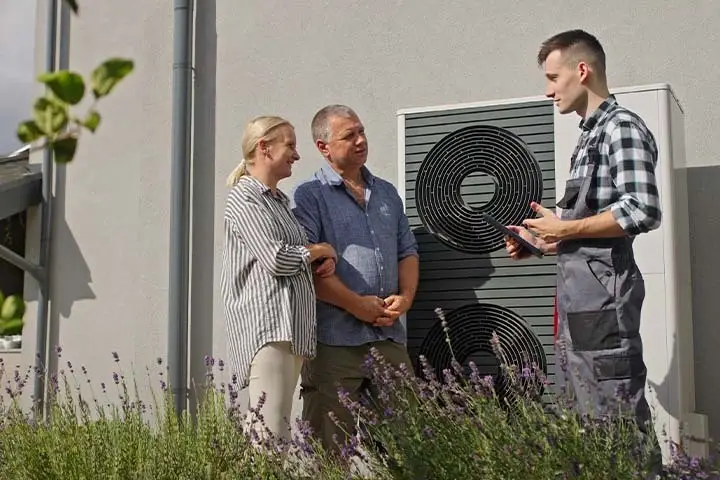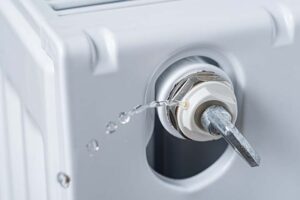Table of Contents
Yes, landlords can get grants for heat pumps. The main grants are the Boiler Upgrade Scheme and Energy Company Obligation (ECO4) for the heat pump installations. These schemes provide complete and partial funding for different types of heat pumps.
In this article, we provide a complete guide on how landlords can get a hold of heat pump grants. We will also cover the choices, funding, process for applying, and benefits you can reap from these schemes.
So, without further delay, let’s start this guide by knowing the things you need to get sorted before getting started with the process.
Things to Consider Before Applying for Heat Pump Grants
Look, we get it. You’ve heard about the £7,500 grant and complete heat pump funding and want to get your slice of the pie. But let us save you some headaches. Before you call a certified installer, check these basics:
- Your property needs decent insulation: We can’t tell you how many times we’ve had to disappoint landlords because their Victorian terraces leak heat like a colander. You need to get your insulation sorted first – it’s not just about the loft, those walls matter too.
- Check your radiators: Most UK homes have radiators sized for gas boilers running at 70°C. Heat pumps work best at lower temperatures, around 45°C. You might need bigger radiators or underfloor heating. Don’t panic though – we’ve got some tricks up our sleeve for this later.
The Grant Eligibility Criteria
In my 12 years of installing heat pumps, I’ve seen countless landlords get tangled up in grant eligibility rules. Let’s cut through the confusion and get to what really matters.
Boiler Upgrade Scheme
Here’s what actually counts for BUS eligibility, based on hundreds of installations we’ve done:
- Your property needs to be in England or Wales. Sorry, Scotland and Northern Ireland – you’ve got your own (often better) schemes.
- That EPC matters more than you’d think. You need one that’s less than 10 years old, and here’s the kicker – if it recommends loft or cavity wall insulation, you’ll need to sort those first.
- Size matters too – your heat pump can’t be bigger than 45kWth. Don’t worry though, most domestic installations come nowhere near this limit.
ECO4: The Trickier But More Generous Option
Now this is where things get interesting. ECO4 can be a goldmine if your tenants qualify, but the rules are tighter than a drum.
First off, your property needs to be rated D or worse on the EPC scale. But here’s what most people miss – you need to be able to improve it by at least two bands through the upgrades.
The tenant eligibility bit is what catches most landlords out. Your tenants need to be receiving certain benefits or fall under specific income thresholds.
Here’s what I tell landlords to check first:
For benefits, we’re looking at:
- Income Based – Jobseekers Allowance (JSA)
- Child tax credit (CTC)
- Universal Credit (UC)
- Income Related – Employment and Support Allowance (ESA)
- Income Support Allowance (ISA)
- Working Tax Credit (WTC)
- Pension Guarantee Credit
- Pension Savings Credit
- Housing Benefits
Or if we’re talking household income:
- Single-person household: £31,000 max
- Family with kids: Goes up to about £48,000
- More kids? Add another £7,000 per child
But here’s a clever bit many miss – the Local Authority Flexibility rules. We did an installation last month for a landlord whose property didn’t quite meet the standard criteria, but the local council declared it eligible because of their specific fuel poverty targeting. Worth checking your local authority’s rules.
The Paperwork Required For the Process
Look, I won’t sugar-coat it. You’ll need:
- Proof you own the place.
- Current tenancy agreement.
- Written consent from tenants.
- Valid safety certificates.
- Current EPC rating of D or lower.
For ECO4, you’ll also need proof of your tenant’s benefit status or income. Get these sorted early – nothing worse than having to delay an installation because of missing paperwork.
Apply for Free Boiler Replacement!
How to Choose Your Heat Pump?
Choosing the right heat pump is crucial for better performance and a comfortable home. Right, now let’s talk turkey. You’ve got two choices:
- Air Source Heat Pumps usually make the most sense for rental properties. They’re cheaper to install, need less space, and the new models are surprisingly quiet. Even in Manchester’s lovely weather (yes, that’s sarcasm), they work brilliantly.
- Ground Source Heat Pumps are the Rolls-Royce option. They’re more efficient but need space for groundwork. Unless you’ve got a decent garden or some land, stick with an air source.
Here’s what we tell our customers about sizing:
For a typical 3-bed semi:
- Usually needs an 8-12kW unit
- Costs between £8,000-£12,000 after grants
- Takes about 3-4 days to install
For a 2-bed flat:
- Usually needs a 5-8kW unit
- Costs between £6,000-£9,000 after grants
- Takes about 2-3 days to install
You can consider these sizes for heat pumps if your property matches a 3-bed semi or a 2-bed flat. Otherwise, you can take personalised quotes from reliable installers.
Costs to Consider For Heat Pump Installation
Before you make a decision on which heat pump would be suitable for you, you need to consider the costs involved in installing and running it.
Let’s break down what you’re paying for:
- The heat pump unit: £4,000-£8,000
- Labor costs: £2,000-£3,500
- Extra bits and bobs: £1,000-£2,000
- Radiator upgrades (if needed): £1,500-£3,000
But here’s what most installers won’t tell you: get your quotes in summer. We’re usually quieter then and more likely to offer better rates. Also, planning permission is usually easier because council officers are less swamped.
Making The Process Work with Tenants
The process of installing a heat pump in rental properties can be a headache. Landlords need to make it work with tenets and align with their schedules and all. Give tenants plenty of notice. They need to be home during installation, and installers need access to every room at some point.
Schedule works between tenancies if possible. It’s easier for everyone.
1. Planning For Success
Here’s my tried-and-tested timeline for landlords:
3 Months Before:
- Get your EPC and property survey done
- Start gathering installer quotes
- Check grant eligibility
2 Months Before:
- Choose your installer
- Apply for grants
- Plan any preparatory works
1 Month Before:
- Notify tenants
- Schedule any power supply upgrades
- Order materials and equipment
Brief your tenants properly on using the new system. Heat pumps work differently from gas boilers – they’re best left running continuously at a steady temperature.
2. Maintenance Matters
I always tell landlords this: maintenance isn’t optional with heat pumps. You need:
- Annual servicing (about £150-£200)
- Regular filter cleaning (you can do this yourself)
- Occasional system pressure checks
But here’s the good bit – modern heat pumps are pretty reliable. Most issues I see are from poor installation or lack of maintenance, not equipment failure.
3. The Smart Functionality
Modern heat pumps come with clever controls. You can:
- Monitor performance remotely
- Adjust settings from your phone
- Track energy usage
- Set different zones for different areas
This is brilliant for landlords – you can spot problems before tenants even notice them.
The Installation Process for Heat Pumps
Here we come down to the final stages of installing a heat pump at your property.
When the installation team turns up, here’s what goes down:
- External unit positioning and mounting
- Pipeline routing planning
- Initial internal system preparations
- Heat pump installation
- Connecting pipework
- Starting electrical works
- Finishing electrical connections
- Installing controls
- System testing and commissioning
Sometimes we need an extra day for radiator upgrades or complicated pipework. Always plan for this – it’s better to finish early than run over.
Common Snags and How to Avoid Them
After installing hundreds of these systems, here are the real problems I keep seeing:
1. External Unit Placement
The number one headache is finding the right spot. You need:
- Good airflow
- Solid mounting surface
- Drainage for defrosting water
- Consideration for noise
I once had to completely redesign an installation because the landlord hadn’t mentioned the bedroom window right above our planned unit location. Save yourself the hassle – walk around your property and think about these things beforehand.
2. Pipework Routes
Those nice clean lines in the brochures? Real life’s messier. We need to get pipes from the outdoor unit to your hot water cylinder. Think about:
- External pipe runs (they can be ugly if not planned well)
- Internal routes (we might need to box them in)
- Access to all areas during installation
3. Power Supply
Most properties need electrical upgrades. Your ancient consumer unit hidden under the stairs probably won’t cut it. Budget for:
- New circuit breakers
- Possibly a new consumer unit
- Sometimes a supply upgrade
Final Thoughts
Look, heat pumps aren’t perfect. They need proper planning, good installation, and regular maintenance. But when done right, they’re brilliant. I’ve installed systems that have run flawlessly for years, saving landlords and tenants serious money on heating bills.
Just remember:
- Don’t cheap out on the installation
- Plan properly
- Keep up with maintenance
- Train your tenants on using the system
Get these basics right, and you’ll have a heating system that’ll serve you well for 15-20 years. Get them wrong, and you’ll be on first-name terms with your maintenance engineer.
Need more advice? Most decent installers will do a free survey and consultation. Just make sure they’re MCS certified and check their reviews. And whatever you do, don’t just go with the cheapest quote – in heat pump installation, you do get what you pay for.



